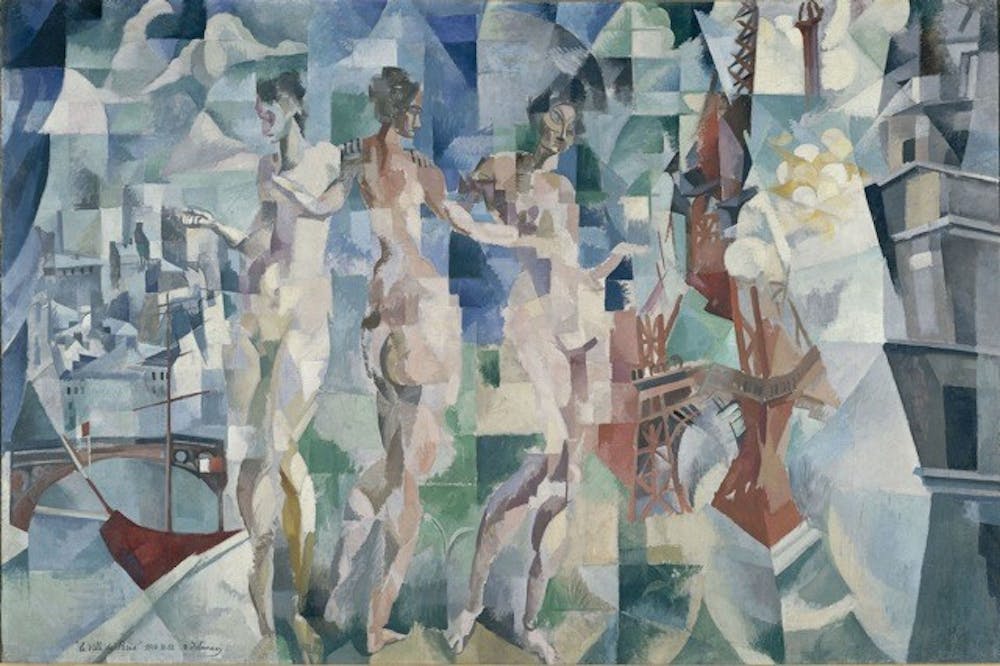In the second to last room of PMA’s Visions of Arcadia exhibit, Robert Delaunay’s City of Paris occupies an entire wall. Here we see the height of modern Arcadia, the beginning of a new beginning. Rectangular planes of color interrupt, and yet construct simultaneously an image of modern Paris. On the right of the canvas, the Eiffel tower rises in bold red contours; nondescript houses loom in the background. These are cluttered and still somewhat uniform — reminiscent of city life. In the scene’s center, the elegant figures of the mythological Three Graces emerge from jarring color fields, which distract us from the erotic details of femininity. These Graces are strikingly distorted, striking beauties lodged in a deliberate placement of color and form. This is a paradise of ideals, of modernity.
What, exactly, is Arcadia? It’s one of the most celebrated subjects in the history of art: a floating, dreaming world born of a better time and a better place. It’s a simplicity aligned with abundance. This is nirvana, paradise, utopia. It’s happiness depicted as a bunch of naked people huddled around a tree.
So how does that tired dream of Arcadia plant itself in the minds of 20th century artists? At PMA, it appears in geometric planes and dreamlike color palettes, in landscapes that embrace their two dimensional beauty and the paradise that is art itself. These visions of Arcadia range from Gauguin’s tropical Tahitian paradise and Cezanne’s nude bathers to the modernity of an industrialized Paris. However, what holds this exhibit together is its transitory nature. Moving from room to room we watch as the art world enters a new era and we are startled as we receive motifs of the past through a modern lens.
On view June 20th to September 3rd Philadelphia Museum of Art, $12 with student ID

